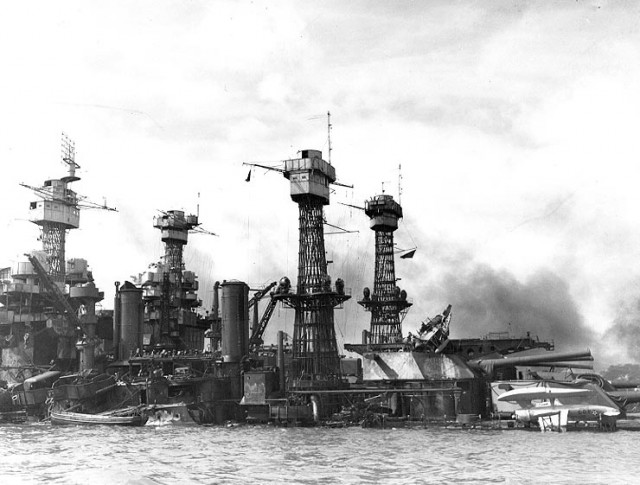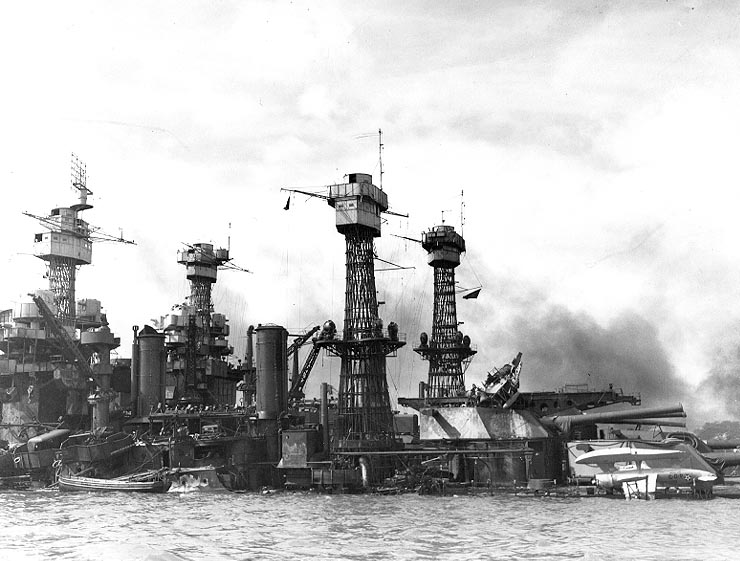
In the aftermath of the attacks on Pearl Harbour during World War Two stories emerged of sailors who were trapped in the sunken battleships, some even survived for weeks.
Those who were trapped underwater banged continuously on the side of the ship so that anyone would hear them and come to their rescue. When the noises were first heard many thought it was just loose wreckage or part of the clean-up operation for the destroyed harbour.
However the day after the attack, crewmen realised that there was an eerie banging noise coming from the foward hull of the USS West Virginia, which had sunk in the harbour.
It didn’t take long for the crew and Marines based at the harbour to realise that there was nothing they could do. They could not get to these trapped sailors in time. Months later rescue and salvage men who raised the USS West Virginia found the bodies of three men who had found an airlock in a storeroom but had eventually run out of air.
They were Ronald Endicott, 18, Clifford Olds, 20, and Louis Costin, 21. Within the storeroom was a calendar and they had crossed off every day that they had been alive – 16 days had been crossed off using a red pencil. The men would have been below deck when the attack happened, so it is unlikely that they knew what was happening.
Those who survived the attack and were crew on the USS West Virginia have remembered the story and retold it quietly as a story of bravery and determination of the young soldiers.
In truth, the US Navy had never told their families how long the three men had survived for, instead telling them that they had been killed in the attack on the harbour. Their brothers and sisters eventually discovered the truth but were so saddened that they did not speak of it.
One of Clifford’s friends and comrades Jack Miller often returned to the harbour and would pray for his friend at the site of the sunken wreck. He says that just the night before the attack they had been drinking beer together, and he had wanted to rescue him desperately in the days after the attack.
However there was no way of any rescue crews getting to them since if they cut a hole in the ship, it would flood it, and if they tried to use a blowtorch it could explode since there was too much oil and gasoline in the water.
Survivors say that no one wanted to go on guard duty anywhere near the USS West Virginia since they would hear the banging of trapped survivors all night long, but with nothing that could be done.
